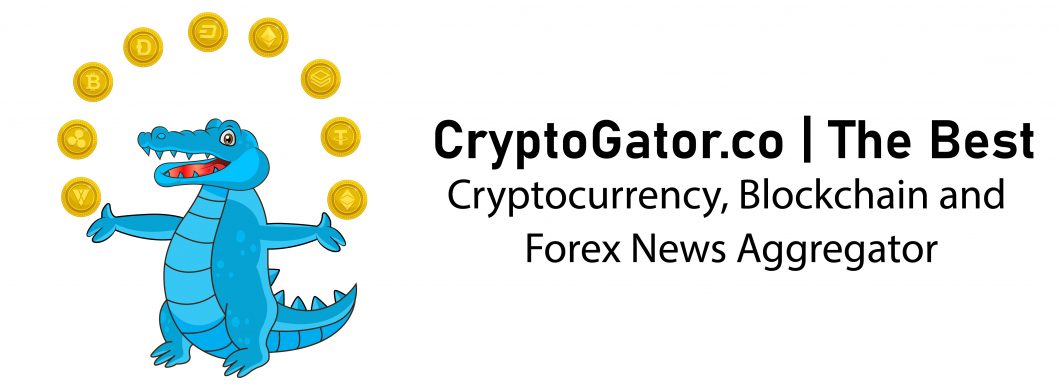<p>If someone stated that there was a clandestine plot to fatally impede the crypto industry in the US, being executed by the government and its regulatory authorities, you might conclude that they sounded overly conspiratorial.</p><p>
However, these ideas are being articulated by a number of well-known figures within the overlapping worlds of crypto, finance and politics, and the case they present is coherent and logically argued.</p><p>
At the same time, there are commentators who assert that such theories are inaccurate, and the result of joining dots where no true connections actually exist. So, what are the arguments, and what has triggered these unprecedented levels of suspicion?</p><p>What Is Operation Choke Point 2.0?</p><p>We’ve recently witnessed the failures, in quick succession, of three banks: Silvergate Bank, <a href=”https://www.financemagnates.com/tag/Silicon-Valley-Bank/” target=”_blank” rel=”follow”>Silicon Valley Bank</a>, and Signature Bank which were regarded as crypto-friendly. They provided services to crypto companies, or facilitated interaction between crypto and the traditional financial system. Silvergate created the Silvergate Exchange Network (SEN), and Signature had Signet, both of which are mechanisms enabling always-on exchange services between fiat and crypto.</p><p>
The shutdowns of these banks, then, is an obstacle for crypto, particularly when it comes to integration into the mainstream, which requires reliable and easily accessed fiat on/off ramps. Basically, users need the capacity to convert regular currency into crypto, and vice versa.</p><p>
And, this is where speculation about underhand strategies from the authorities comes to the fore. The idea is that were regulators, or those instructing them, hostile to <a href=”https://www.financemagnates.com/tag/crypto/” target=”_blank” rel=”follow”>crypto</a>, then rather than enacting anything as conspicuously brute-force as an outright ban, they could instead target on/off ramps, along with any other useful banking services, and freeze out crypto through quiet isolation.</p><p>
In fact, the theory has been laid out clearly by Nic Carter, of crypto-focused venture capital firm Castle Island Ventures. He calls it <a href=”https://www.piratewires.com/p/crypto-choke-point” target=”_blank” rel=”nofollow”>Operation Choke Point 2.0</a>, and alleges that: “the US government is using the banking sector to organize a sophisticated, widespread crackdown against the crypto industry.” He maintains that: “It includes the [Biden] administration itself, influential members of Congress, the Fed, the FDIC, the OCC, and the DoJ.”</p><p>Silvergate, Silicon Valley, and Signature</p><p>When <a href=”https://www.financemagnates.com/tag/Signature-Bank/” target=”_blank” rel=”follow”>Signature Bank</a> was placed into an FDIC receivership by the New York State Department of Financial Services, soon after Silvergate and Silicon Valley Bank had collapsed, aspects of its closure triggered claims that evidence of a coordinated anti-crypto operation was now in full view.</p><p>
In particular, comments by the Signature Board Member, Barney Frank were widely circulated. Frank, a former congressman and co-author of the Dodd-Frank Act, stated in an interview with CNBC that: “I think part of what happened was that regulators wanted to send a very strong anti-crypto message.”</p><p>
And, in a Bloomberg interview, he explained: “I think that if we’d been allowed to open tomorrow, that we could’ve continued. We have a solid loan book, we’re the biggest lender in New York City under the low-income housing tax credit.”</p><p>
On top of that, a Reuters <a href=”https://twitter.com/0xfoobar/status/1636203586852999171?s=20″ target=”_blank” rel=”nofollow”>report</a> did the rounds on social media, in which it was claimed, with reference to the <a href=”https://www.financemagnates.com/tag/FDIC/” target=”_blank” rel=”follow”>FDIC</a> looking for bidders for Signature, that any potential buyer would be required to give up crypto-related business at the bank.</p><p>
As news of these details circulated, it became apparent that a concerted fightback was taking shape, looking to bring attention to and take a stand against perceived attacks on the crypto industry.</p><p>
Republican Congressman and House Majority Whip, Tom Emmer circulated a letter he has sent to the FDIC Chairman, demanding explanations as to whether the FDIC was “weaponizing recent instability in the banking sector to purge legal crypto activity from the US.”</p><blockquote class=”twitter-tweet”><p lang=”en” dir=”ltr”>Today, I sent a letter to FDIC Chairman Gruenberg regarding reports that the FDIC is weaponizing recent instability in the banking sector to purge legal crypto activity from the U.S. 👇 <a href=”https://t.co/fDmaA0XGWv”>pic.twitter.com/fDmaA0XGWv</a></p>— Tom Emmer (@GOPMajorityWhip) <a href=”https://twitter.com/GOPMajorityWhip/status/1636008298481680384?ref_src=twsrc%5Etfw”>March 15, 2023</a></blockquote><p>
Emmer was supported by Cathie Wood, the Founder and CEO of Ark Invest, who stated that she believes “regulators are using crypto as a scapegoat for their own lapses in oversight of traditional banking,” placing the blame for the shutdowns of SVB and Signature squarely on Federal Reserve policy.</p><blockquote class=”twitter-tweet”><p lang=”en” dir=”ltr”>If you are correct, Congressman, then the FDIC and others will prevent the US from participating in the most important phase of the internet revolution. Like you, I believe regulators are using crypto as a scapegoat for their own lapses in oversight of traditional banking. <a href=”https://t.co/UDh3bwB2pB”>https://t.co/UDh3bwB2pB</a></p>— Cathie Wood (@CathieDWood) <a href=”https://twitter.com/CathieDWood/status/1636178266510721024?ref_src=twsrc%5Etfw”>March 16, 2023</a></blockquote><p>
Additionally, a combative legal approach is being taken by the Chief Policy Officer at Blockchain Assist, Jake Chervinsky, who laid out at length the <a href=”https://twitter.com/jchervinsky/status/1636356457770762245?s=20″ target=”_blank” rel=”nofollow”>evidence</a> he has collected of an attempted ‘debanking’ of crypto companies while sending FOIA requests on this subject to the Fed, the FDIC, and the OCC.</p><p>Faults in the Theory</p><p>With regard to reports that any buyer of Signature would be required to give up the bank’s crypto-related activity, this has subsequently been denied by the FDIC, which state that: “the acquirer decides the conditions of their bid.” Subsequently, Signature was bought by Flagstar Bank, a subsidiary of New York Bancorp, but, according to the FDIC: “Flagstar Bank’s bid did not include approximately $4 billion of deposits related to the former Signature Bank’s digital banking business.”</p><p>
Those who suspect conspiracy are pointing to the deal excluding the digital (that is, crypto) part of Signature as evidence supporting their theory, while those who doubt that anything clandestine has taken place will require firm evidence that Flagstar Bank did not decide for itself, without undue pressure, what it wanted to acquire.</p><p>
Then there are the legal issues that have been trailing Signature since earlier this year when it was reported that the bank faces a class action lawsuit for its involvement with the disgraced crypto platform <a href=”https://www.financemagnates.com/cryptocurrency/ftx-the-rise-the-fall-and-the-reaction/” target=”_blank” rel=”follow”>FTX</a>. According to a US District Court filing, algorithmic trading firm Statistica Capital alleges that: “Signature knew of and permitted the commingling of FTX customer funds within its proprietary, blockchain-based payments network, Signet.”</p><p>
And, it’s a similar story at Silvergate, where a series of proposed class action lawsuits have alleged in various ways that Silvergate Bank’s links to FTX and Sam Bankman-Fried are tantamount to aiding and abetting FTX in its fraudulent activities.</p><p>
These are significant factors that seem overlooked by those proposing that there is a coordinated assault, as they indicate that regulators have cause for concern, and call into question the notion that crypto-related banks are being singled out without legitimate cause. After all, FTX’s problems were evidently real, so why would they not most adversely affect the banks that had the closest relationships with either FTX or the crypto industry, in general?</p><p>Where Does the Truth Lie?</p><p>The thinking that underpins Operation Choke Point 2.0 is not outlandish, since the original, Obama-era Operation Choke Point (which targeted legal business that was deemed to be high risk) is a matter of recent historical fact. That program ceased operation amid criticism that it sidestepped due process, but to consider that such tactics might be employed again doesn’t require a conspiratorial worldview.</p><p>
We can also take into account that parts of the crypto industry explicitly position themselves as highly disruptive successors to legacy financial institutions. In essence, there are times when the crypto industry’s attitude towards traditional banks is, we need to use your services in order that we can replace you, so a degree of establishment hostility in return wouldn’t be unexpected.</p><p>
However, the elephant in the room that advocates of a hidden agenda fail to mention is the utterly catastrophic crypto collapses that defined 2022. A remarkable aspect of the falls of Terra/Luna, Celsius, Three Arrows Capital, and, finally and most egregiously, FTX (culminating in the arrest of its Founder, Sam Bankman-Fried), is that contagion didn’t immediately spread beyond the crypto industry.</p><p>
When considering how bad things were at FTX, keep in mind last November’s <a href=”https://www.documentcloud.org/documents/23310507-ftx-bankruptcy-filing-john-j-ray-iii” target=”_blank” rel=”nofollow”>description</a> from John Ray III, the appointed CEO placed in charge of evaluating the wreckage after the company had collapsed, stated that: “Never in my career have I seen such a complete failure of corporate controls and such a complete absence of trustworthy financial information as occurred here.”</p><p>”From compromised systems integrity and faulty regulatory oversight abroad, to the concentration of control in the hands of a very small group of inexperienced, unsophisticated and potentially compromised individuals, this situation is unprecedented.”</p><p>
Crypto might move fast, but not so quickly that what took place at FTX is no longer relevant.</p><p>
Is it plausible that regulators might take advantage of the turmoil in both crypto and standard finance if they were looking for ways to critically restrict crypto? Arguably so. But, would it not also be strange if last year’s crypto disasters did not initiate a reaction from regulators looking to keep crypto industry contagion as sealed off as possible?</p><p>
Ultimately, the truth may lie somewhere between the two opposing factions. While the crypto industry is correct to be wary of overzealous regulators and hostile administrations, it should not lose awareness of the damage done by reckless operators within its own walls.</p>
This article was written by Sam White at www.financemagnates.com.



